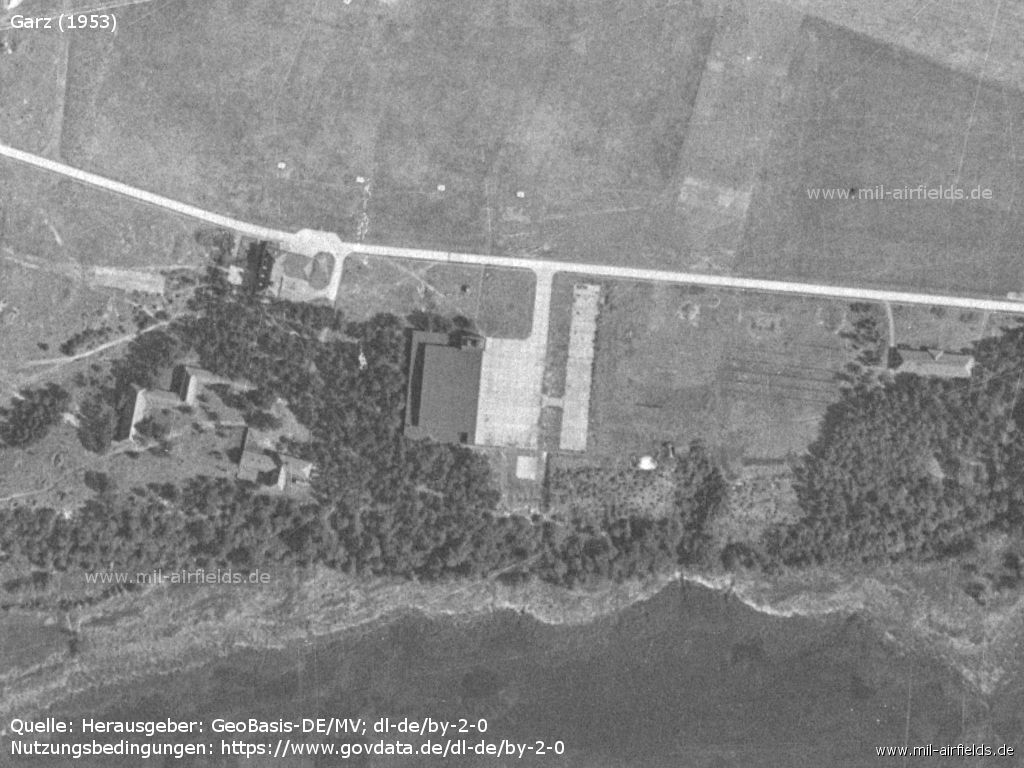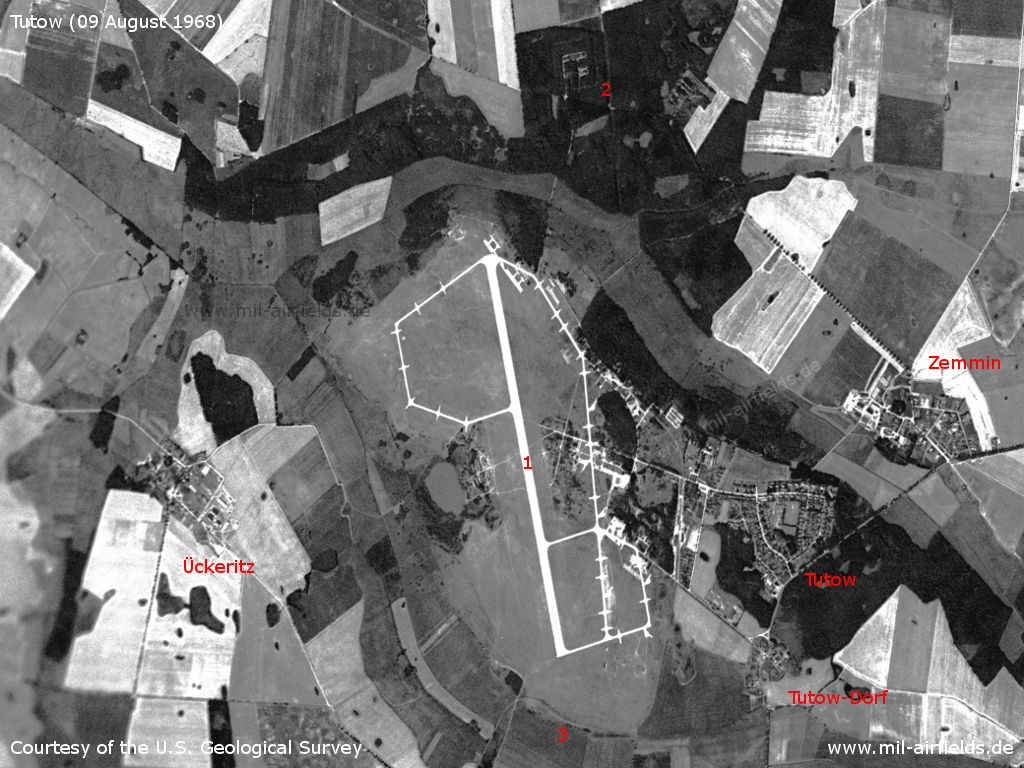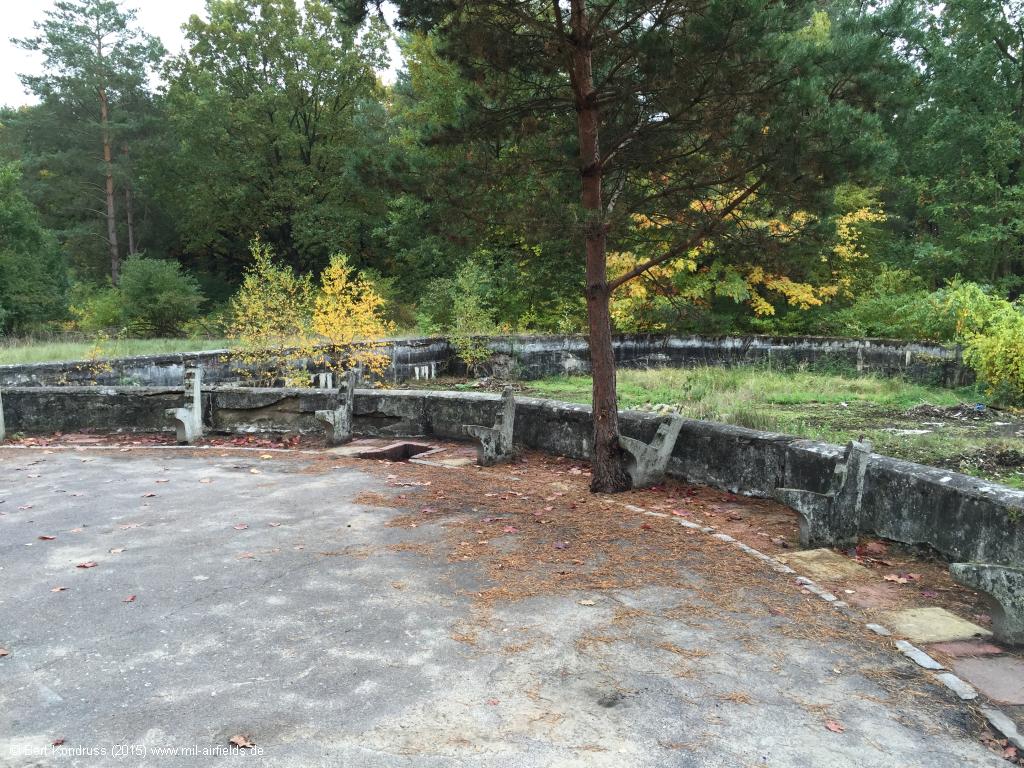Anklam: Airfield
For historical information only, do not use for navigation or aviation purposes!
| Coordinates | N534958 E0134009 (WGS84) Google Maps |
| Former East Germany (GDR) | District of Neubrandenburg |
| Federal state | Mecklenburg-Vorpommern (Mecklenburg-Western Pomerania) |
| Location indicator | EDCA |
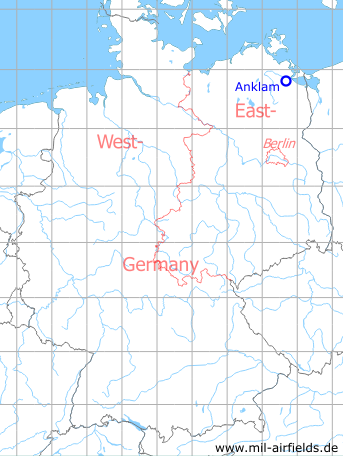
Germany during the Cold War Map
The history of the Cold War airfields: Anklam
During World War II
Use
Luftwaffe air base.
Situation
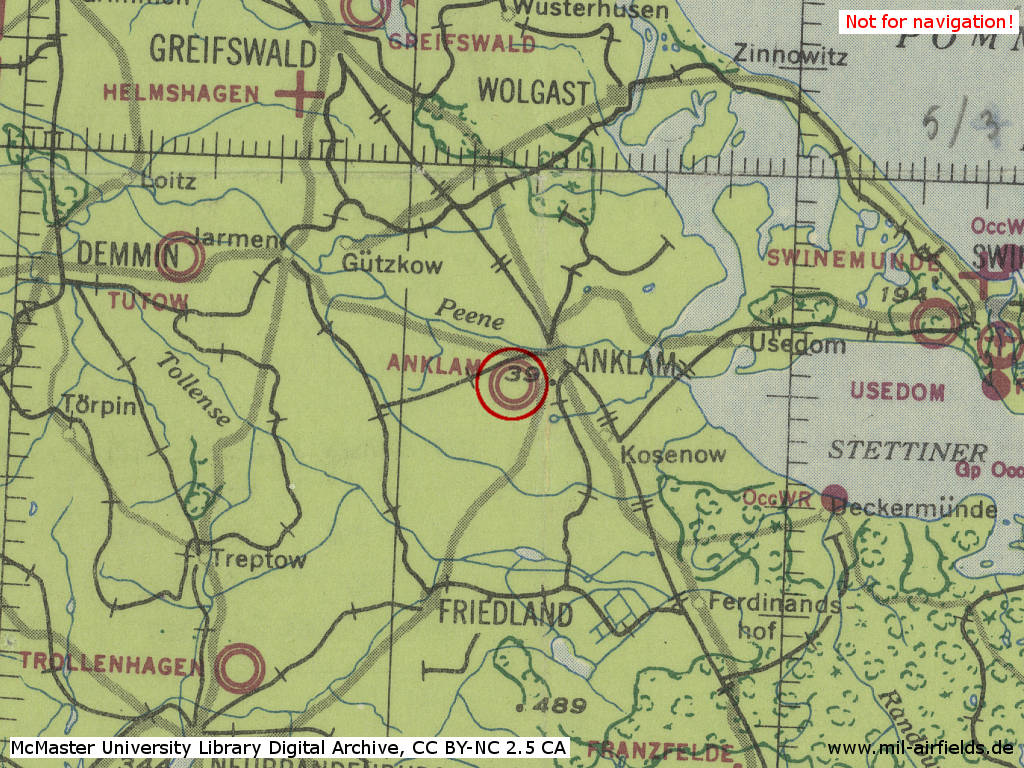
Anklam Air Base in World War II on a US map from 1943
Source: McMaster University Library Digital Archive, License: Creative Commons Attribution-NonCommercial 2.5 CC BY-NC 2.5 CA
Overview
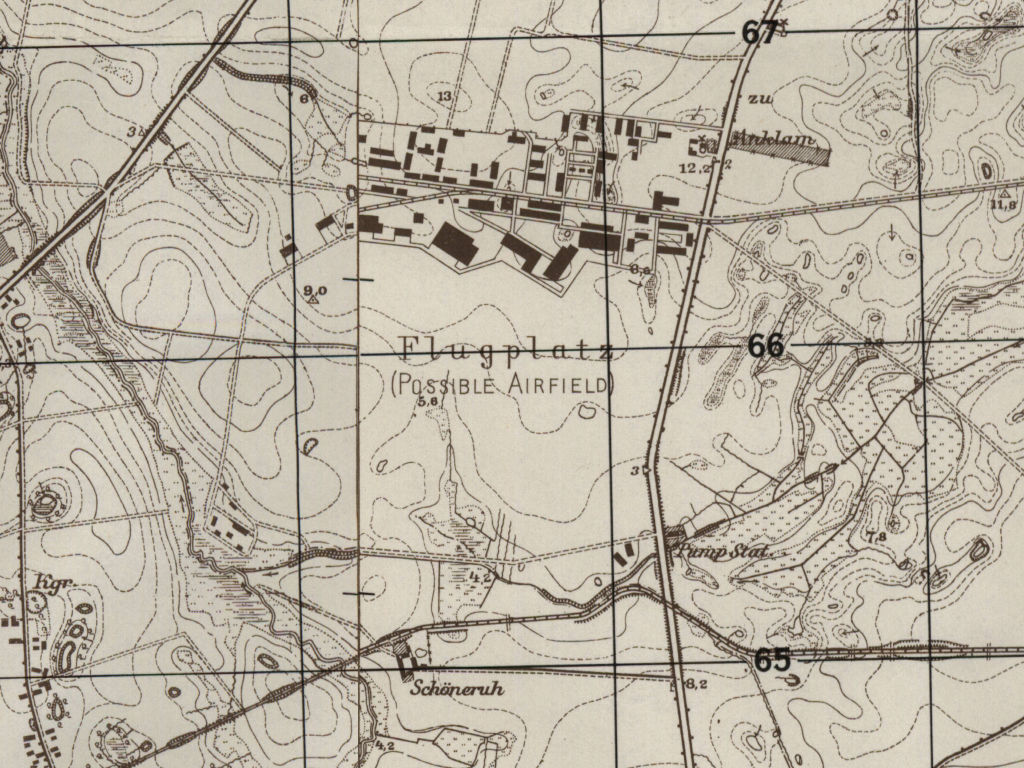
Former Anklam Air Base on a US map from 195x (composed of two sheets)
Source: AMS M841 GSGS 4414, Courtesy Harold B. Lee Library, Brigham Young University
During the Cold War
In the 1940s
History
CIA status November 1947
The airfield at Anklam has been completely dismantled.
CIA report from 1949
A passenger on a train stated that several resettlers who had so far cultivated the landing field of the ANKLAM (N 54/U 99) airfield had to leave their farms as the airfield was to be reconstructed.
This report has not been confirmed.
Source: CIA
In the 1950s
Overview
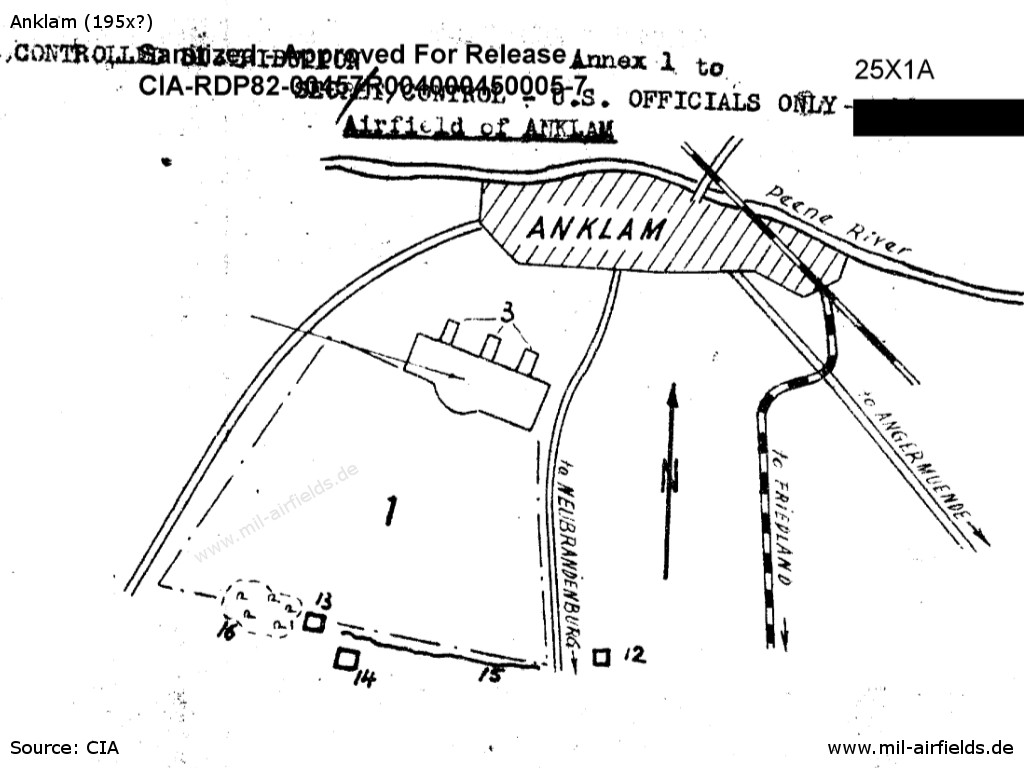
Sketch made for the CIA, presumably from the 1950s
Source: CIA
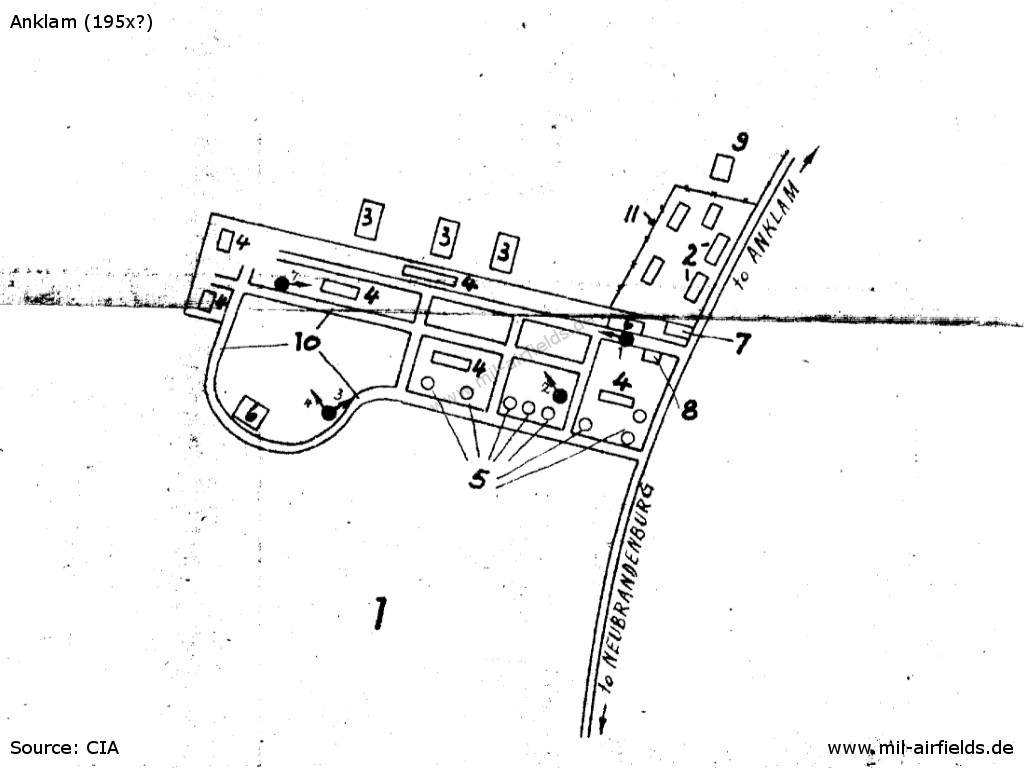
| 1 | Landing field |
| 2 | New houses occupied by refugees |
| 3 | Three destroyed quartering buildings for EM (enlisted men) |
| 4 | Destroyed hangars and large buildings |
| 5 | Large holes, 6 to 10 feet deep (from dismantled gasoline tanks?) |
| 6 | Large concrete apron, partly demolished and partly covered with debris |
| 7 | Intact concrete terrain |
| 8 | Destroyed guardhouse |
| 9 | Old farmhouse |
| 10 | Road |
| 11 | Intact fence surrounding the former airfield |
| 12, 13, 14 | One farmhouse each |
| 15 | Ditch |
| 16 | Small woods |
| 17 | Narrow-gauge railroad line |
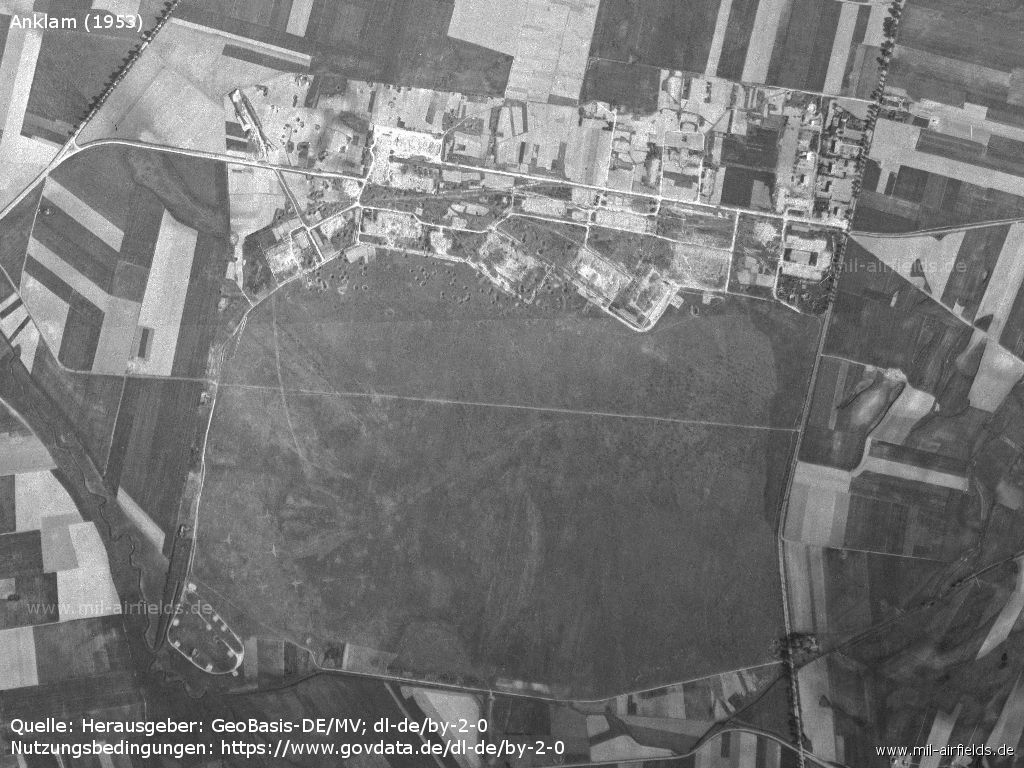
Aerial picture from 1953
Source: Landesamt für innere Verwaltung M-V, Amt für Geoinformation, Vermessung und Katasterwesen - www.geoportal-mv.de, Data licence Germany – attribution – version 2.0, www.govdata.de/dl-de/by-2-0
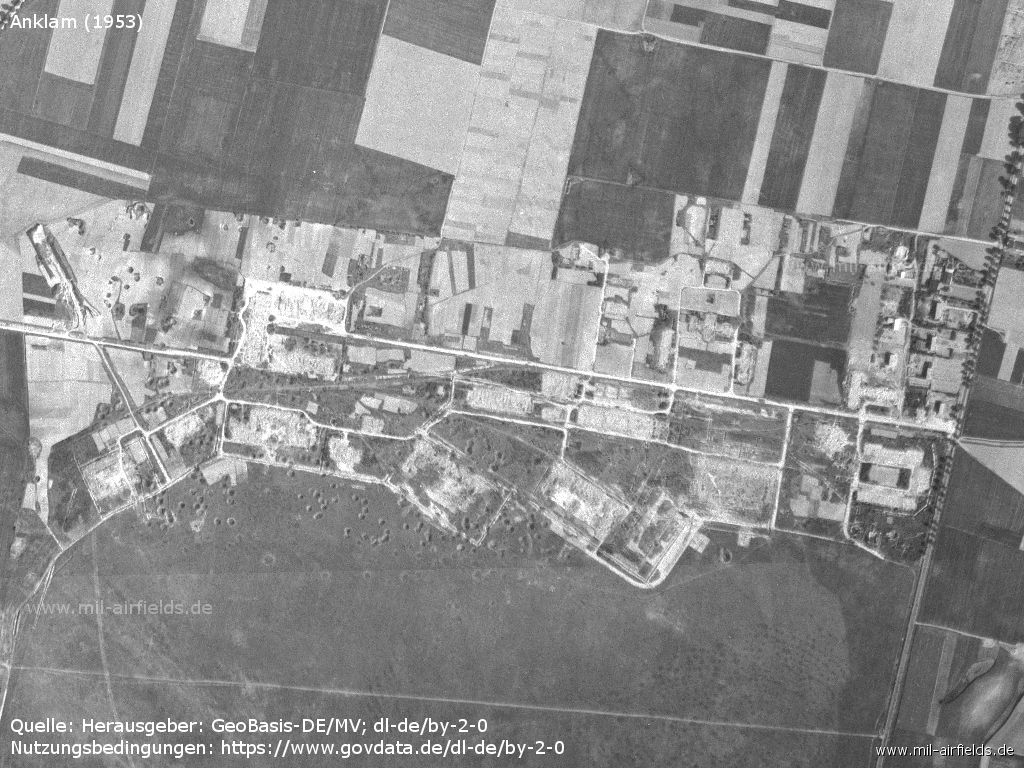
Enlargement: Former barracks in the north - Buildings and hangars were demolished, only the foundations are still standing. At the edge of the airfield many bomb craters from the Second World War are still visible, which have been filled in the meantime.
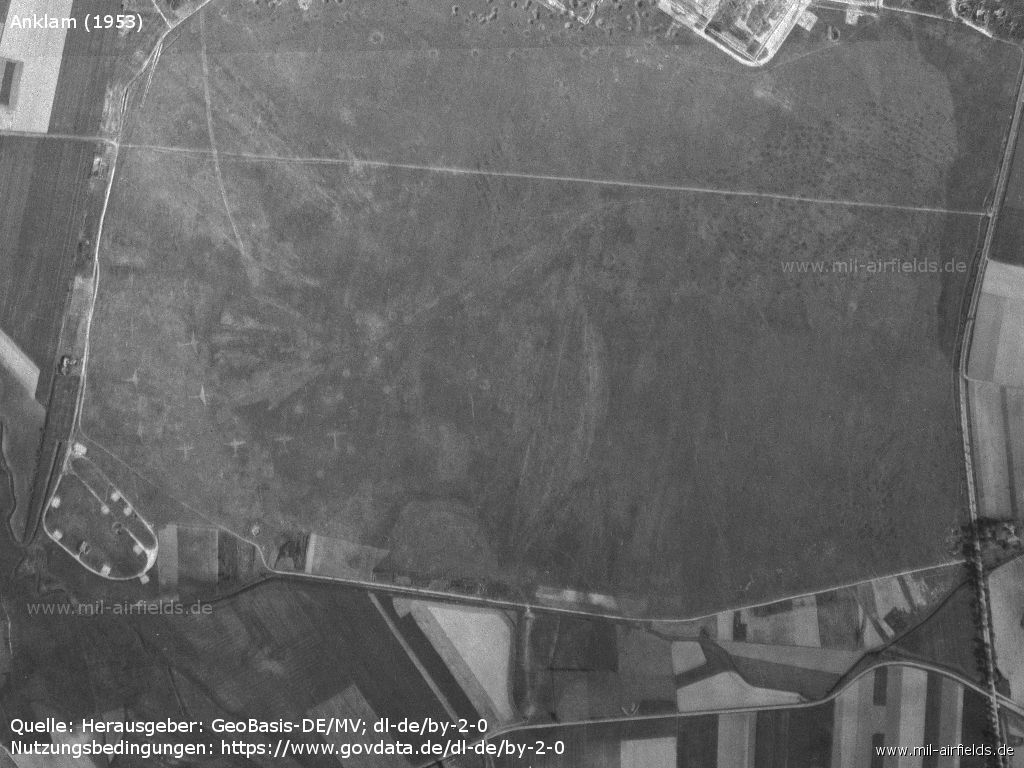
Enlargement: Airfield
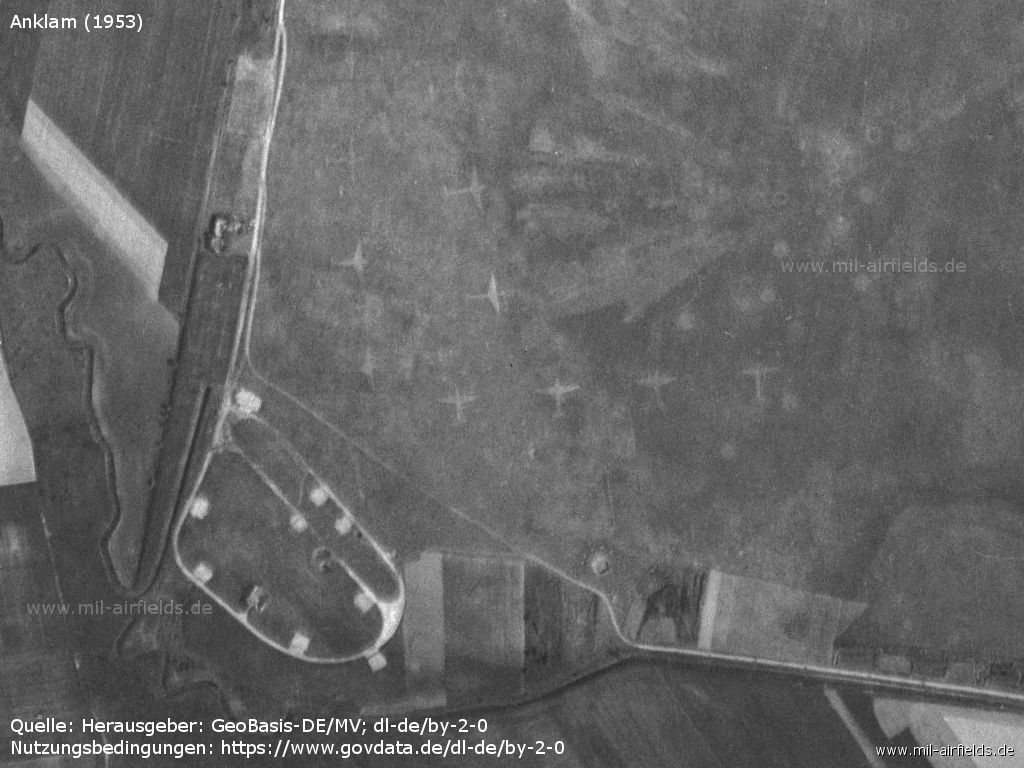
Enlargement: For the use as air-to-ground firing range, aircraft silhouettes have been applied to the ground as targets in the southwest.
History
CIA report from March 1950
The Anklam (N 54/U 99) airfield was unoccupied and unguarded. Although it has been rumored for a long time among the local residents that the field was to be reconditioned, no such work has been observed.
Comment: The previously reported rumors on intended reconditioning work at the field apparently are not true. The airfield is not occupied by an air force unit.
CIA report from May 1950 about the state on 09 March 1950
This town is not occupied by Soviet troops. The former Arado airfield, at the south-southwest exit of ANKLAM, is not in use. Part of the field is being cultivated. The former landing area is intact and could accomodate single- and twin-engine fighter aircraft if the terrain were rehabilitated and obstacles removed. There are no indications of such improvement, however.
CIA report about the state on 27 August 1950
1. On 27 August 1950 the Anklam (N 54/U 99) airfield was not occupied. The field was being used for parachute jumping several days each week. Two biplanes, a major and a captain wearing blue-gold epaulets, 16 EM and ... took part in the practice. * All parachutists wore parachute jump suits. One man jumped from each biplane, the average time of descent being 3 minutes. After the exercise the officers left in the biplanes toward the north, and the EM left on the truck toward Alten-Treptow (N 54/U 67).
2. It was learned from the Anklam Labor Office that all unemployed persons in the district were to be drafted to recondition the airfield **
* Comment: Parachute jumps were reported ... on 27 July 1950 but have not been confirmed by other sources. ... It is not known to which unit the aircraft and parachutists are assigned. They may be assigned to the Peenemuende airfield although the motor ... in Werneuchen-Strausberg.
** Comment: Reconditioning work at the airfield has not been confirmed by other sources.
CIA report about the time from 01 to 24 September 1950
1. No parachute jumps have been observed over the Anklam (N 54/U 99) airfield since early September 1950. * Acrobatics were repeatedly done by up to six biplanes between 1 and 24 September 1950. The aircraft came from the north and returned in the same direction.
2. The debris of buildings and hangars was being removed from the landing field and piled on the edge of the field. The bomb craters on the field were being filled. **
* Comment: Individual parachute jumps were previously reported by ... An air force unit is not believed to be in Anklam.
** Comment: No ... confirmed this work. The field is possibly to be used during air force maneuvers.
CIA report March 1951
No indication of a planned reoccupation of the airfield were observed up to 17 March. **
** Comment: The airfield is not occupied although the landing field is serviceable. To date, no reports have been received from other sources indicating that the field is to be occupied by an air force unit.
CIA report from 01 May 1951
Between 26 March and 7 April 1951, ground attack firing was practiced daily by six jet aircraft over Anklam (N 54/U 99) airfield. Eight ground targets, in the shape of four-engine planes, were visibly marked by white sand. Practices were held daily, except Saturday afternoons and Sundays, from 8 a. m. to noon and from 1:30 to 6 p. m. The aircraft approached from the north and departed in the same direction. *
* Comment: ... jet aircraft, probably MiG-15s, are also used for air to ground attacks.
CIA report for the time between 10 November to 8 December 1951
Clearing and activity, including the disposal of rubble, continued at Anklam airfield. After 15 November 1951, firing practices previously held were no longer observed. On 15 November 1951, the air force detachment departed from the field in the direction of Greifswald. According to Soviet soldiers, the firing practices were suspended until the spring of 1952.
CIA report from January 1952
The rubble has not yet been cleared and the airfield is used for gunnery and bombing practice purposes. In a farmhouse on the outskirts of the airfield, there is a unit of 25-30 Soviet air force men who are responsible for placing the gunnery and bombing targets. Planes from both Peenemunde and Neubrandenburg take part in the practices, which started in the beginning of April.
CIA report from October 1959
2. The field is occasionally used by D.D.R. LUFTHANSA biplanes engaged in pest control, spraying fields etc.
3. Occasionally also the field is used as a base for pleasure flights for the local population. Planes land and take off using a grass runway. No radar or radio installations are on the field.
4. On 25th August some 40 E.G.A. (East German Army) trucks were lined up on the airfield and the drivers were given driving instructions and practice. This happens frequently.
In the 1960s
Situation

Anklam airfield on a US map in 1969 - Here, the railway siding to the airfield is still shown.
Source: Earth Sciences and Map Library, University of California, Berkeley
In the 1980s and early 1990s
Use
Agricultural airfield of the East German airline Interflug and used by the pre-military organization "Gesellschaft für Sport und Technik". In the former National People's Army (Nationale Volksarmee, NVA), the agricultural airfield had the number A 03-15. In addition, the airfield was registered as NVA helipad 6006.
Situation
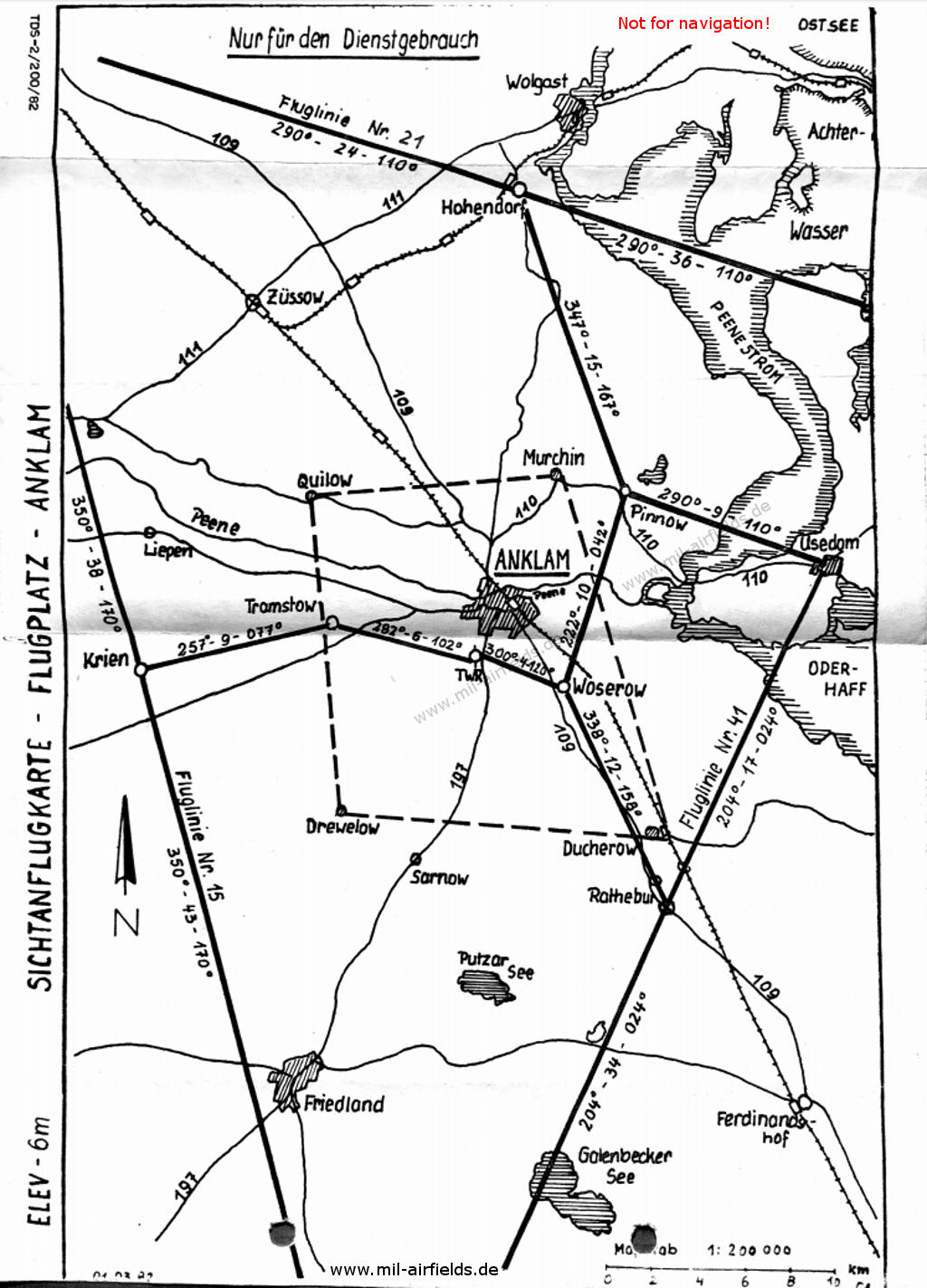
Approaches from the Local Flying Routes in 1982
Source: Agricultural flight information, East Germany
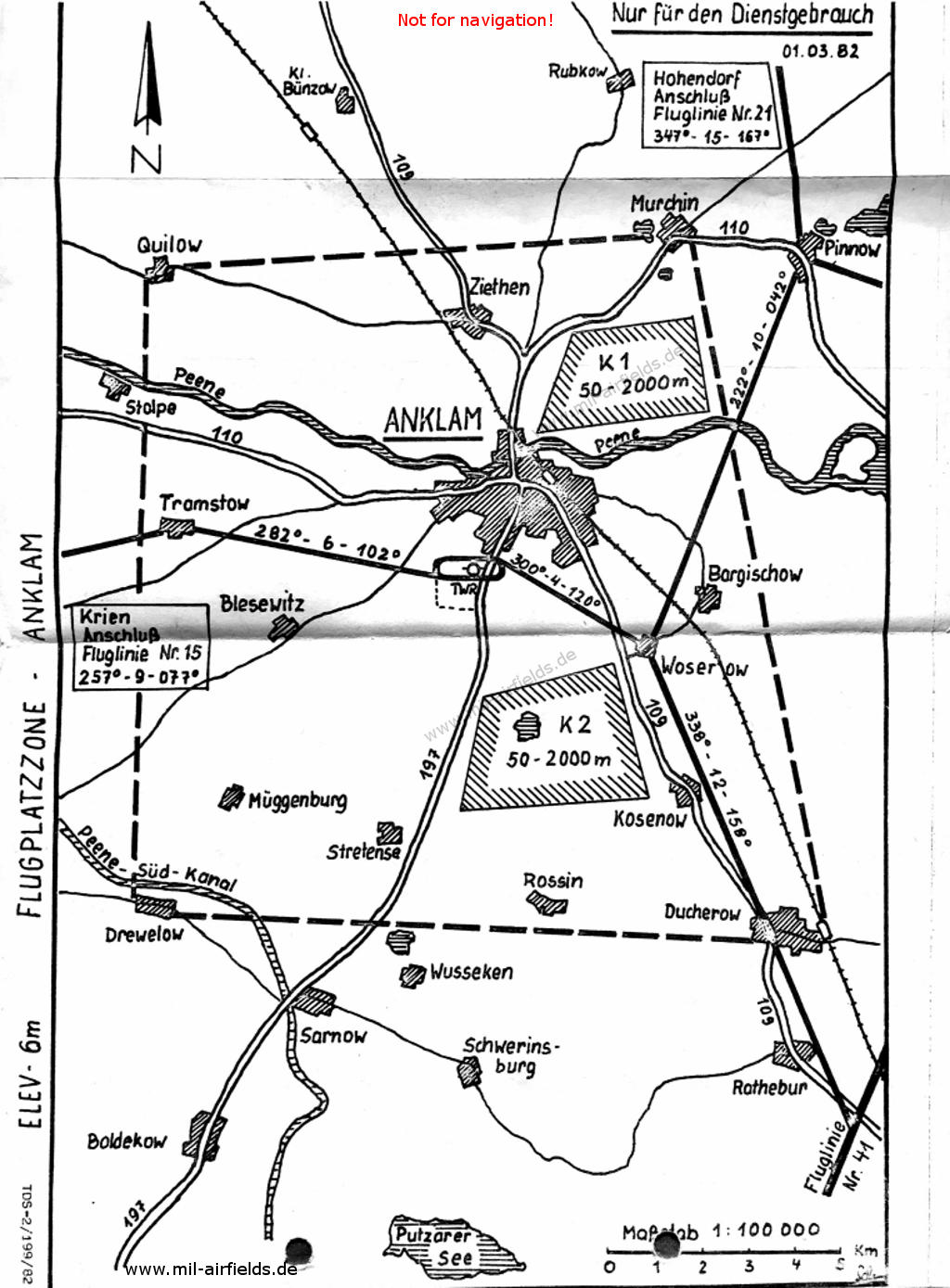
Aerodrome zone in 1982
Source: Agricultural flight information, East Germany
Overview
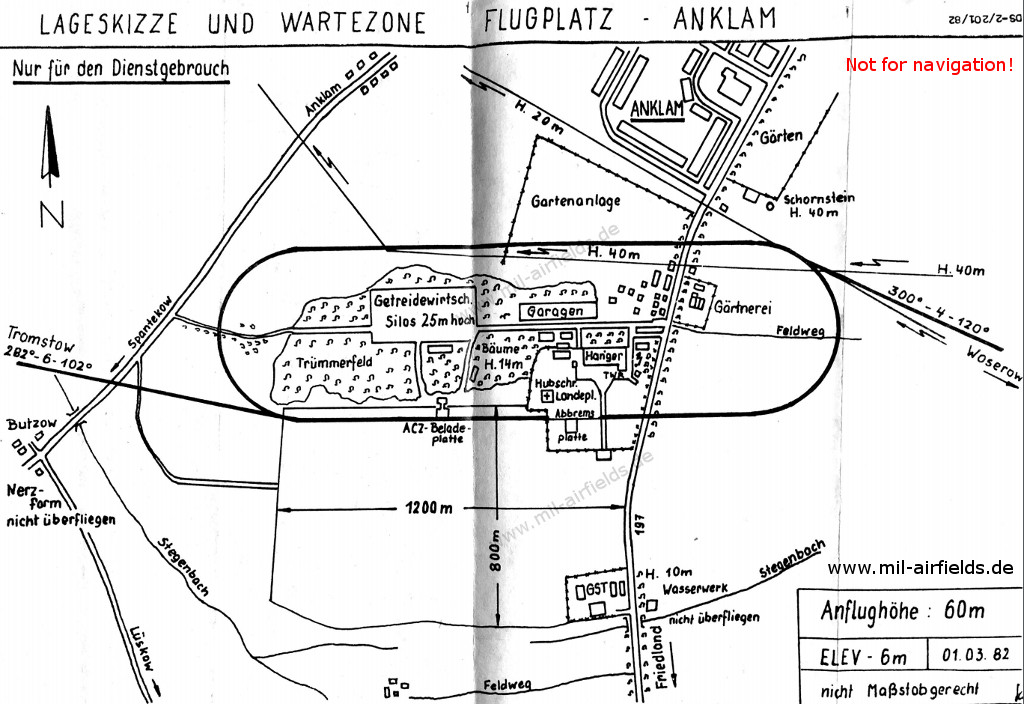
Anklam agricultural airfield on a map from 1982
Source: Agricultural flight information, East Germany
| Abbremsplatte | engine run area |
| ACZ | Agrochemisches Zentrum (Agricultural-chemical center) |
| Bäume | trees |
| Beladeplatte | loading area |
| Feldweg | Path |
| Garagen | garages |
| Gärten | Gardens |
| Gartenanlage | gardens |
| Gärtnerei | market garden |
| Getreidewirtschatf | grain production |
| GST | Gesellschaft für Sport und Technik (Pre-military organization) |
| HubschrLandepl | helicopter landing area |
| Nerzfarm | mink farm |
| nicht überfliegen | do not overfly |
| Schornstein | Smokestack |
| Silos | silos |
| Trümmerfeld | field of rubble |
| Wasserwerk | waterworks |
Telephone
PB Anklam 5001-3
Fluggespräche 5092
Fluggespräche 5092
Teletype
Telex 033336
Airspace
Aerodrome zone from 01 March 1982, according to the 3rd implementing rule of the East German Flying Regulation:
Quilow - Murchin - Ducherow - Drewelow - Quilow
Quilow - Murchin - Ducherow - Drewelow - Quilow
Connections between visual approach and departure routes and local flying routes
Entry and exit points: Woserow, Pinnow, shortest route to Local Flying Route No. 21 (leg Greifswald - Swinoujscie);
Woserow, Pinnow - Usedom;
Entry and exit point: Tramstow, shortest route to Local Flying Route No. 15 (leg Greifswald - Woldegk);
Entry and exit points: Woserow, Ducherow, Local Flying Route No. 14 (leg Usedom - Woldegk).
Today
Use
General aviation.
Overview
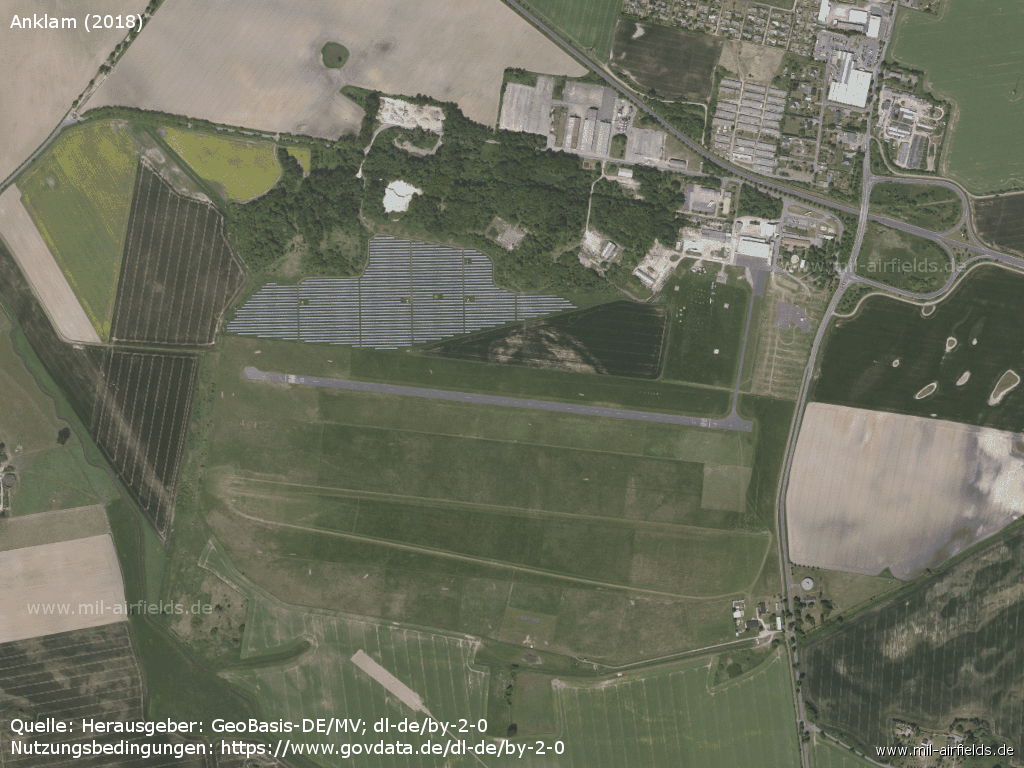
Aerial picture 2018
Source: Landesamt für innere Verwaltung M-V, Amt für Geoinformation, Vermessung und Katasterwesen - www.geoportal-mv.de, Datenlizenz Deutschland – Namensnennung – Version 2.0, www.govdata.de/dl-de/by-2-0
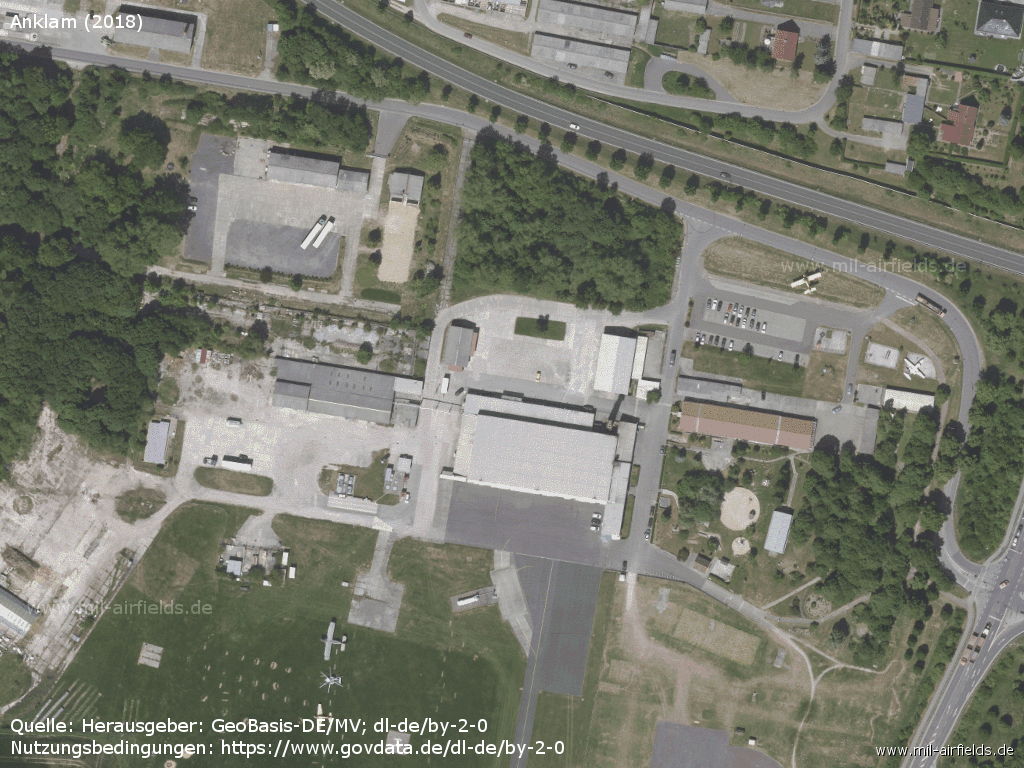
Airfield installations
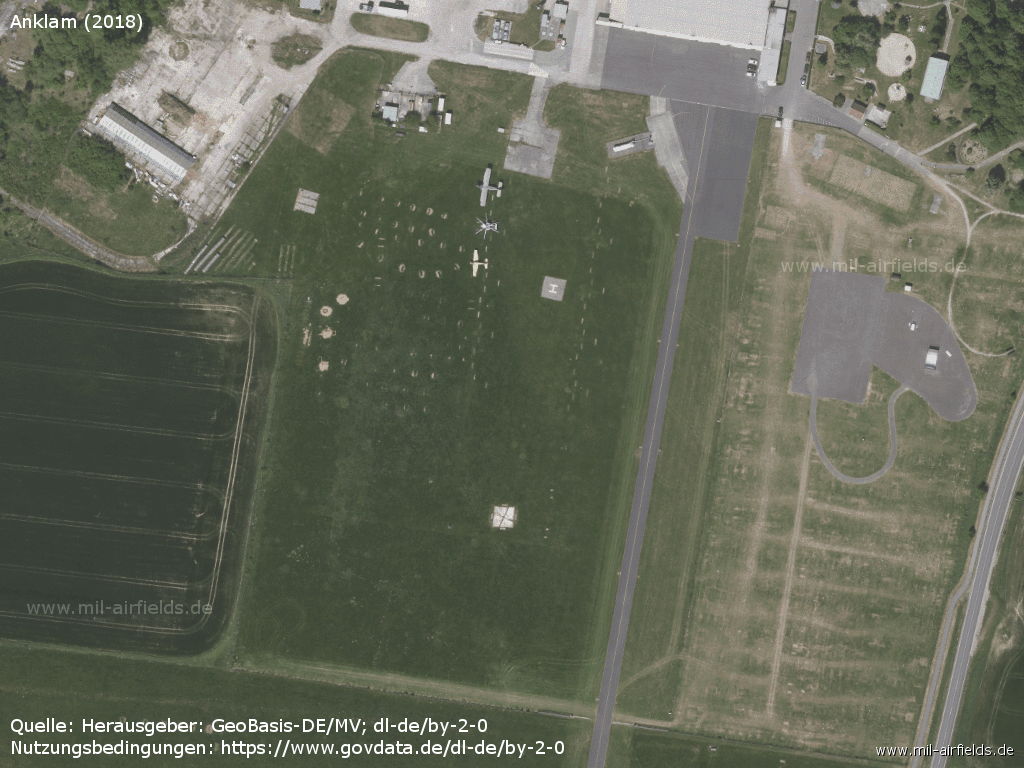
Aircraft parking positions
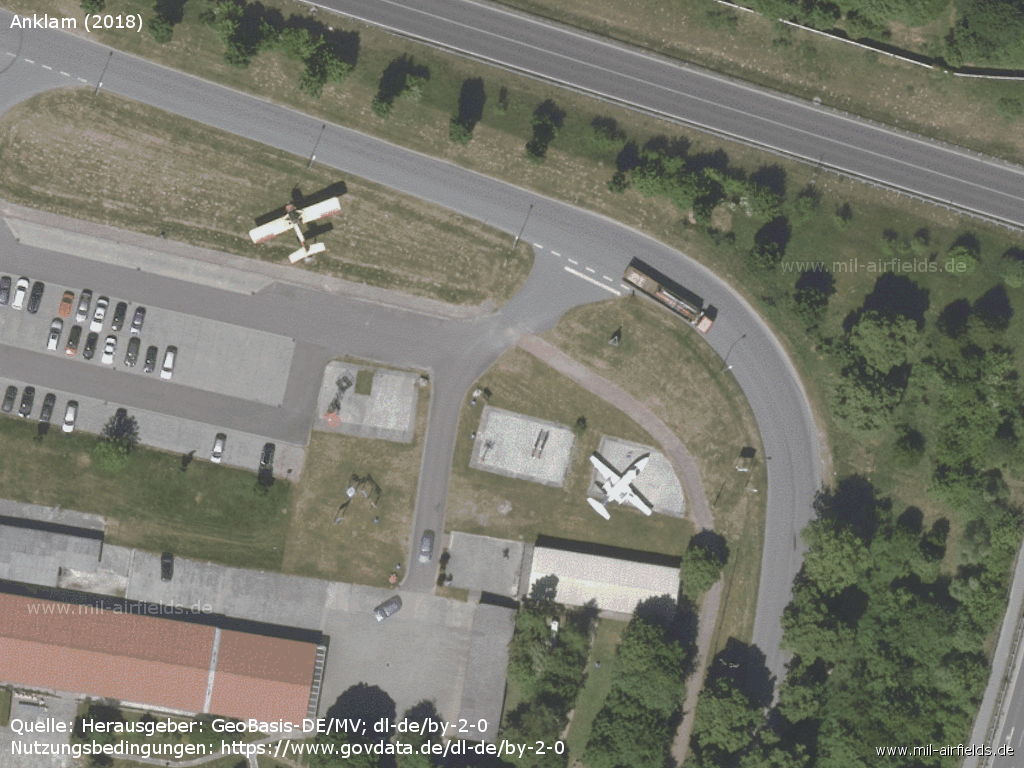
Aircraft on display
Links
- http://www.flugplatz-anklam.de/index.html - Anklam airfield
Sources
- http://www.geoportal-mv.de/ - Geoportal MV
Related topics
Airfields in the vicinity
- 228°/11km Spantekow: Helipad 3386 (HSLP 3386)
- 202°/13km Boldekow: Helipad 3385 (HSLP / HLP 3385)
- 038°/17km Lassan: Agricultural Airfield
- 021°/19km Seckeritz: Agricultural Airfield
Categories
Military Airfields GermanyAgricultural Airfields in former East GermanyMilitary Airfields in former East GermanyGST AirfieldsRecommended
Image credits are shown on the respective target page, click on the preview to open it.
